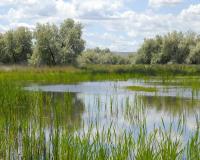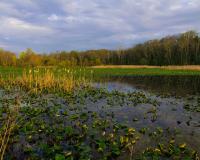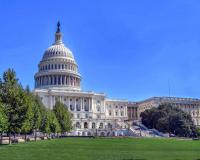
Vibrant Environment
All | Biodiversity | Climate Change and Sustainability | Environmental Justice | Governance and Rule of Law | Land Use and Natural Resources | Oceans and Coasts | Pollution Control

In February 2022, the Biden Administration committed to spending over $1 billion on Everglades restoration efforts. Just this past month, the Administration proposed another nearly half billion. Why is there suddenly so much political pressure to save the Everglades? The truth is, this pressure is not new.

Each year, the Environmental Law and Policy Annual Review (ELPAR)—a collaboration between Vanderbilt University Law School and ELI—identifies some of the year’s best academic articles that present legal and policy solutions to pressing environmental problems. ELI Senior Attorney Linda Breggin, Vanderbilt Law Prof. Michael Vandenbergh, and students in a Vanderbilt law class select 20 of the most creative, persuasive, and feasible proposals in the environmental legal literature.

The COVID-19 pandemic has exposed and exacerbated inequities that lead to differences in health outcomes, particularly for racial and ethnic minority groups. One community that has been particularly affected is the Pacific Islander community in the United States, which has experienced exceedingly high rates of infection, hospitalization, and morbidity.

In the spring of 1972, environmental law was still in its infancy in many places around the world. Here in the United States, NEPA, the Clean Air Act, and ELI itself were toddlers—all under three years old—and the Clean Water Act wouldn’t be amended to what we know it as today until that fall. Within this setting, the UN hosted the first global Conference on the Human Environment in Sweden.

Peace is an essential element of sustainable development. In early June, the international community will gather at the forthcoming Stockholm+50 International Meeting to reflect on progress in sustainable development, the outstanding gaps and challenges, and to discuss the way forward. It is time — indeed, past time — to formally acknowledge the central role of peace in sustainable development and to take specific, concrete measures to incorporate these linkages in our policies, institutions, finances, and practices.

The Environmental Law Institute (ELI) is pleased to announce the winners of the 33rd Annual National Wetlands Awards: John R. White, Jessica Hua, Mark Laska, Zachariah Perry, and Mick Micacchion.

Peru is the fourth largest rainforest country, and its Amazon forests are one of the most biodiverse areas in the world. However, deforestation is a growing phenomenon. According to Peru’s Ministry of the Environment, from 2019 to 2020, about 203,272 hectares of Amazon forests were cut down during the Covid-19 pandemic.

The Environmental Law Institute (ELI) is pleased to announce the winners of the 33rd Annual National Wetlands Awards: John R. White, Jessica Hua, Mark Laska, Zachariah Perry, and Mick Micacchion.

This is the second of a two-part series of blog articles discussing CERCLA and environmental justice. Read Part I here.
